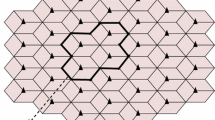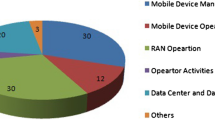Abstract
In this work system performance with the evaluation of OP (outage probability) for a green communication cellular system, named as ESCS (energy saving cellular system), is reported. The consideration of the deployment for ESCS is in order to obtain the most efficient without modifying the circuit allocation in 5G (5th generation) architecture, and which is searching a way by adjusting most efficient in application of communication energy. Generally, most important point in the way to earn the energy saving for a cellular radio system is by means of reducing the transmission power. It is known that there is about above 50% energy wasting in handling the power of circuit, air condition, and others for a cellular system. For discussion such issue, by adopting an useful scheduling algorithm to distribute different mobile users for distinct BS (base station) proposed in the report. Certainly, the QoS (quality of service) of the mobile network is needed to be guaranteed, and which is kept by presetting a data rate threshold for both downlink and uplink communications. Finally, there are many parameters are assigned to approach the purpose of the proposed scheme for power saving, such as the threshold value of OP (outage probability), the time of after dark. Furthermore, the results from the derived system performance are shown to express the fact which exists between the cost-efficient for the system operators and the system performance of the cellular radio communication.




Similar content being viewed by others
References
Wang, S., & Wang, C. (2015). Joint optimization of spectrum and energy efficiency in cognitive radio networks. Digital Communications and Networks, 1(3), 161–170.
Yaacoub, E. (2012). Performance study of the implementation of green communications in LTE networks. In Telecommunications (ICT) 9th international conference on (pp. 1–5).
Louhi, J. T. (2007). Energy efficiency of modern cellular base stations. In International telecommunications energy conference (INTELEC) (pp. 475–476).
3rd Generation Partnership Project (3GPP). (2008). 3GPP TS 36.213 3GPPTSG RAN evolved universal terrestrial radio access (E-UTRA) physical layer procedures, version 8.3.0, release 8.
3rd Generation Partnership Project (3GPP). (2008). 3GPP TS 36.211 3GPPTSG RAN evolved universal terrestrial radio access (E-UTRA) physical channels and modulation, version 8.3.0, release 8.
3rd Generation Partnership Project (3GPP). (2006). 3GPP TR 25.814 3GPPTSG RAN physical layer aspects for evolved UTRA, V7.1.0.
Baumgartner, A., & Bauschert, T. (2013). Small cells in UMTS radio access networks: Implications on coverage and energy efficiency. In 2013 22nd ITC specialist seminar on energy efficient and green networking (SSEEGN) (pp. 19–24).
Correia, L. M., Zeller, D., Blume, O., Ferling, D., Jading, Y., Gódor, I., Auer G., Perre L. V. D. (2010). Challenges and enabling technologies for energy aware mobile radio networks. IEEE Communications Magazine, 48(11), 66–72.
Marsan, M. A., Chiaraviglio, L., Ciullo, D., & Meo, M. (2009). Optimal energy savings in cellular access networks. In IEEE ICC workshops 2009 (pp. 1–5).
Ciullo, D., Chiaraviglio, L., Meo, M., & Marsan, M. A. (2009). Energy-aware UMTS access networks. In 21st international teletraffic congress (pp.1–8).
Niu, Z., Wu, Y., Gong, J., & Yang, Z. (2010). Cell zooming for cost-efficient green cellular networks. IEEE Communications Magazine, 48(11), 74–79.
Zhou, J., Gong, Z., Yang, Z. Niu, & Yang, P. (2009). Green mobile access network with dynamic base station energy saving. MobiCom, 9(262), 10–12.
Kumar, R. V. R., & Gurugubelli, J. (2011). How green the LTE technology can be? Wireless VITAE, 2011, 1–5.
Chen, T., Yang, Y., Zhang, H., Kim, H., & Horneman, K. (2011). Network energy saving technologies for green wireless access networks. IEEE Wireless Communications, 18(5), 30–38.
Lim, J., Myung, H. G., Oh, K., & Goodman, D.J. (2006). Channel-dependent scheduling of uplink single carrier FDMA systems. IEEE VTC-Fall2006.
Chiaraviglio, L., Ciullo, D., Meo, M., & Marsan, M. A. (2009). Energy-efficient management of UMTS access networks. In 21st international teletraffic congress (ITC) (pp. 1–8).
Chuan, F., & Anqing, L. (2011). Key techniques in green communication. In International conference on consumer electronics, communications and networks (CECNet) (pp. 1360–1363).
Palem, G., & Tozlu, S. (2012). On energy consumption of Wi-Fi access points. In IEEE consumer communications and networking conference (CCNC) (pp. 434–438).
Nahas, M., Abdul-Nabi, S., Bouchnak, L., & Sabeh, F. (2012). Reducing energy consumption in cellular networks by adjusting transmitted power of base stations. In Broadband networks and fast internet (RELABIRA) (pp. 39–44).
Heile, B. (2013). Smart grids for green communications. IEEE Wireless Communications, 17(3), 4–6.
Vizziello, A., & Favalli, L. (2013). Smart distributed system architecture for green communications. In Advanced information networking and applications workshops (WAINA) 27 th (pp. 1577–1581).
Chen, T., Guan, Q., Jiang, S., & Wang, H. (2013). User-motivated topology formation for green communication networks. In IEEE/CIC (pp. 11–15).
Lunttila, T., Lindholm, J., Pajukoski, K., Tiirola, E., & Toskala, A. (2007). EUTRAN uplink performance. In International symposium on wireless pervasive computing (ISWPC) 2007.
Hu, R. Q., & Qian, Y. (2014). An energy efficient and spectrum efficient wireless heterogeneous network framework for 5G systems. IEEE Communications Magazine, 52(5), 94–101.
Pervaiz, H., Musavian, L., & Ni, Q. (2015). Energy and spectrum efficiency trade-off for green small cell networks. In Communications (ICC), 2015 IEEE international conference on (pp. 5410–5415).
Zhang, X., Zhang, J., Wang, W., Zhang, Y., Chih-Lin, I., Pan, Z., et al. (2015). Macro-assisted data-only carrier for 5G green cellular systems. IEEE Communications Magazine, 53(5), 223–231.
Han, S., Chih-Lin, I., Xu, Z., & Rowell, C. (2015). Large-scale antenna systems with hybrid analog and digital beamforming for millimeter wave 5G. IEEE Communications Magazine, 53(1), 186–194.
Rappaport, T. S. (2002). Wireless communication principles and practice (2nd ed., p. 2002). Upper Saddle River, New Jersey: Prentice Hall PTR.
http://cse.hcmut.edu.vn/~ltquan/Documents_Softwares/CDMA/Walfisch-Ikegami.htm.
Marler, R. T., & Arora, J. S. (2004). Survey of multi-objective optimization methods for engineering. Structural and Multidisciplinary Optimization, 26(6), 369–395.
Author information
Authors and Affiliations
Corresponding author
Rights and permissions
About this article
Cite this article
Chen, J.IZ., Tsai, C.Y. On the Impact of Cost-Efficient with OP for an Energy Saving Cellular System. Wireless Pers Commun 97, 1361–1371 (2017). https://doi.org/10.1007/s11277-017-4574-8
Published:
Issue Date:
DOI: https://doi.org/10.1007/s11277-017-4574-8




